If, like me, you’re fascinated by abandoned places, you’ll be well aware of the Chernobyl Nuclear Exclusion Zone. It’s somewhere I’ve always wanted to see so when the chance arose to go to the Eurovision Song Contest in Kyiv, it was the perfect opportunity to squeeze in a day trip to Chernobyl. It was an amazing experience that I would highly recommend when circumstances change in Ukraine.
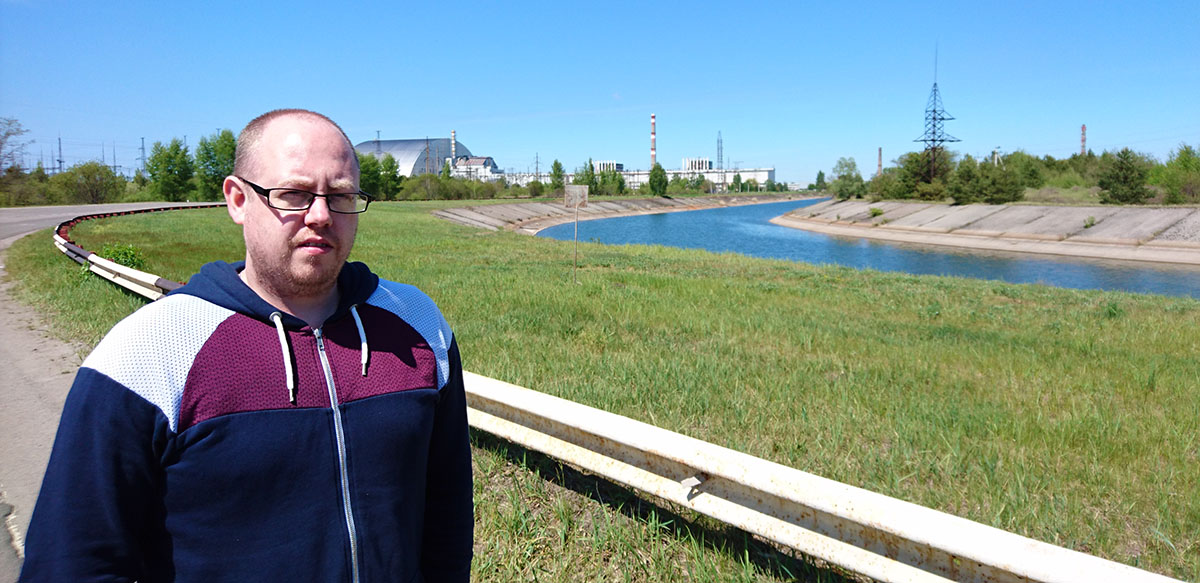
If you’re not overly familiar with the story of the Chernobyl disaster, I would suggest watching the critically-acclaimed HBO series Chernobyl which gives an excellent account of the incident, but here’s the basics.
On the 26 of April 1986, the Chernobyl Nuclear Power Plant caught fire resulting in one of the most devastating nuclear incidents the world has ever seen. The USSR denied anything was wrong until a nuclear power plant in Sweden picked up irregular radiation readings. 36 hours after the initial explosion, the government ordered the evacuation of the city of Pripyat and a 30km exclusion zone was established. This zone remains in place today with strict rules surrounding entry. Nature has started to reclaim much of the area that is very much left as it was in 1986. It’s an astonishing place to visit.
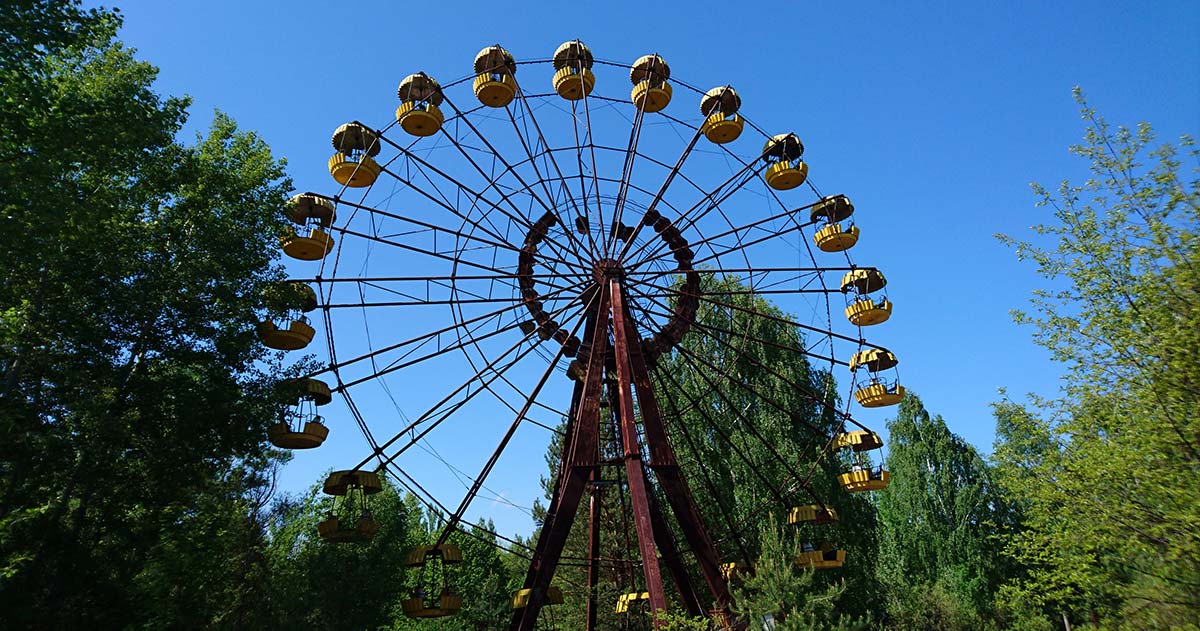
Ukraine gained its independence from the Soviet Union in 1991 and as the country opened up more to tourism, the intrigue around seeing the abandoned city and the site of the world’s worst nuclear disaster grew. The Ukrainian government carried out a comprehensive safety review and decided to issue permits for companies to provide tours to the Chernobyl Nuclear Exclusion Zone. The rules around entry are strict and enforced by the Ukrainian military. Once you follow the rules and stay with your guide, you should be safe. Lots of people worry about the level of radiation but a short visit won’t cause any issues. The typical radiation exposure you experience on a Chernobyl tour can range from 130 to 2610 microsieverts per hour, or the equivalent of a long haul flight.

These are the rules that anyone entering the Chernobyl Nuclear Exclusion Zone must abide by:
- You can only enter with a tour guide authorised by the Ukrainian government.
- You need to stop at security checkpoints going into the zone at the 30km and 10km points. You must also pass through radiation scanners at both of these checkpoints on the way out.
- You can’t stay inside the zone for more than 12 hours at a time without special permission from the government and even then, it’s only for extraordinary cases (filming, scientific research etc).
- You must show identification when entering and carry it with you at all times. You can’t place your identification on any surface while inside the zone.
- Entering the zone without an authorised tour guide is illegal and highly dangerous. Armed guards patrol the perimeter and you may be in danger of entering heavily radiated areas if you try to enter anywhere other than the main access routes.
- Certain areas remain off-limits. The machine cemetery, for example, contains heavily radiated vehicles. A number of areas are marked with radioactive or forbidden entry signs. Stay away from them!
- Your clothing must be appropriate for visiting. Open toe sandals and flip flops are forbidden, as are shorts and shirts. Your arms must be covered so no t-shirts or vests. Hats and caps are recommended. As much of your skin as possible must be covered.
- Only enter buildings if a guide says it’s okay to do so. The buildings can be unstable with a lot of debris and broken glass around.
- Alcohol is forbidden inside the zone. Anyone intoxicated will not be allowed in. The guards may check at the 30km entry point if they suspect you’ve been drinking.
- All weapons are prohibited, as are fireworks.
- Smoking or vaping in the open air is forbidden. You can do neither anywhere within the 10km zone.
- You are not permitted to eat or drink in the zone except in the designated area approved by the government. Drinking water from any open water source such as rivers, wells or lakes is strictly forbidden.
- Do not touch ANYTHING! Objects, structures and vegetation can’t be touched under any circumstances. You are also not permitted to sit on the ground or place any personal item on any surface.
- Do not take anything out of the zone.
So yes, there are a lot of rules but they’re simple enough to follow. The guides are also quick to tell you if you’re in danger of doing something you shouldn’t and the routes you follow keep you away from anything too dangerous or radioactive. Each guide is equipped with instruments like Geiger counters too to ensure the group stays away from hotspots. Most people tend to be cautious visiting somewhere like this anyway and understand why the rules are so strict.
Chernobyl Tours take you to a number of locations with the Exclusion Zone. Although the exact things you see will vary depending on the company and guide, these are the sites that most of the tours will take you to.
Reactor Number 4
This is where the disaster happened. At 1:23am on 26 April 1986, reactor 4 exploded during a safety test causing widespread destruction and the release of radioactive material and smoke from the fires that burned for 9 days. A concrete shell was built to contain the reactor and that has now been covered by the New Safe Confinement Shelter. I was really surprised how close we got to the reactor to be honest. You can stand about 50 metres away and it’s safe to do so.

Statue of Lenin
The only statue of Lenin still standing in Ukraine is in the Nuclear Exclusion Zone. It can’t be removed or demolished so it remains in situ and is a popular stop on tours. Ukraine became independent from the USSR in 1991 and perhaps the strongest evidence of its Soviet past can be found in the zone. Statues, portraits and communist iconography remain just as they were in 1986.

Duga Radar
The Duga radar is also within the zone. It’s a massive installation that was used to detect incoming long range missiles during the Cold War. It’s affectionately called The Woodpecker because of the noise it gave off on radio scanners, although nobody outside the Soviet Union knew where the sound was coming from until after Ukraine’s independence. The area around it is exactly how I imagined a top secret Soviet military facility would look! It’s fascinating. You can read more about the Duga radar here.

Chernobyl Village
The village that gave its name to the Chernobyl Nuclear Power Plant is actually located about 15 minutes drive away. It’s a small enough village with lots of abandoned houses. We stopped at an old school and were able to go inside. This was probably the place that gave me the eeriest feeling of the whole trip.
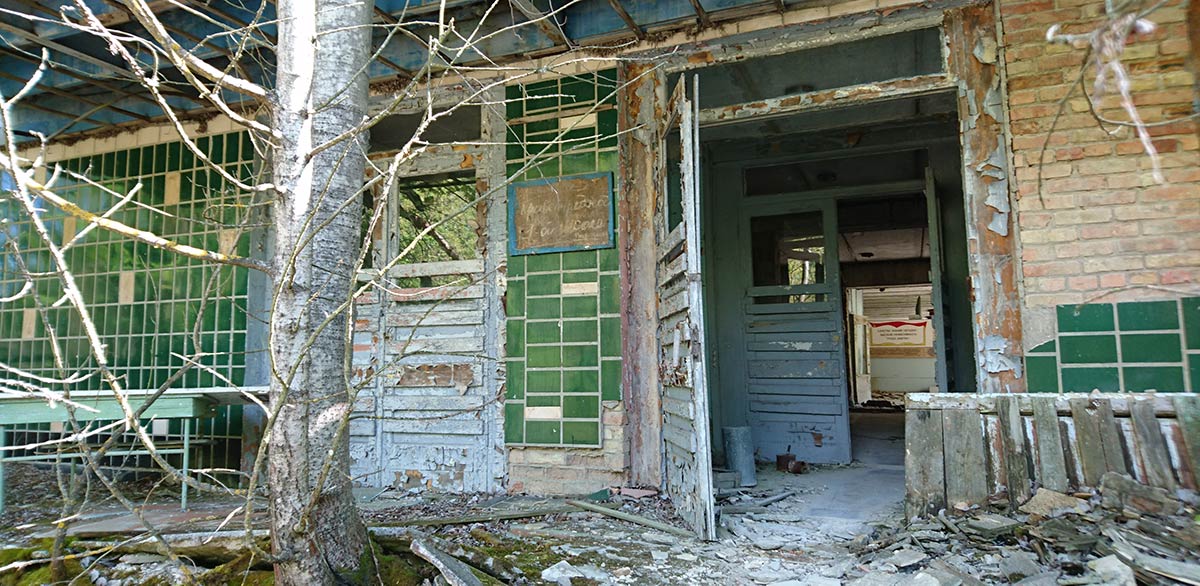
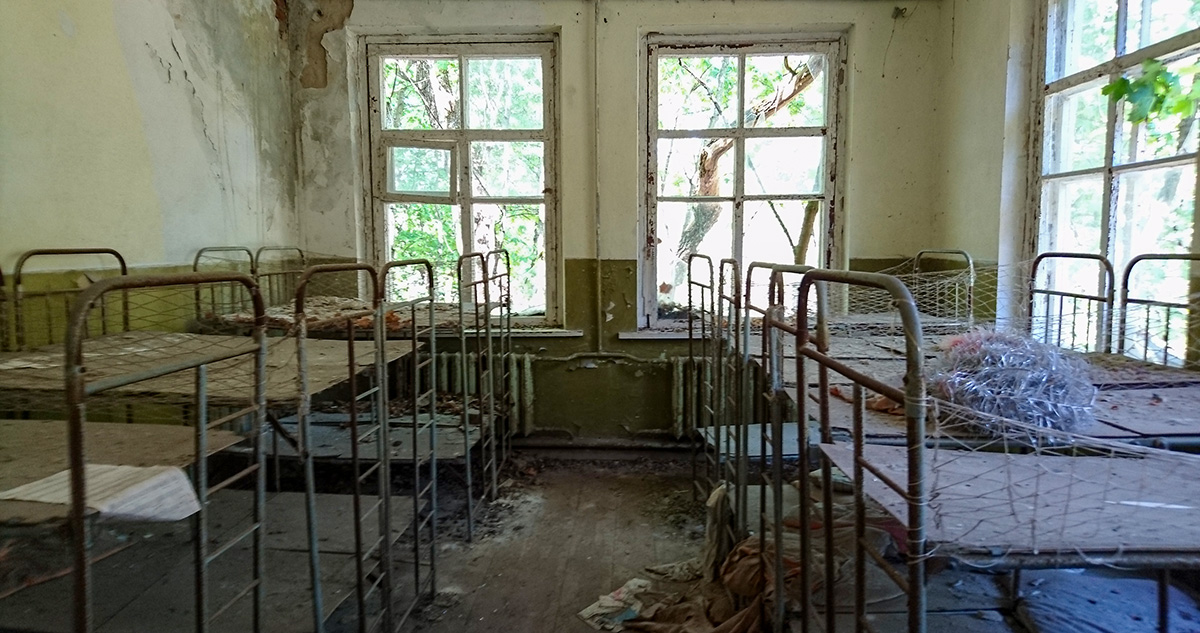
Pripyat
Of course, the main attraction is the city of Pripyat which was evacuated in just 90 minutes in 1986 because of its novel design. It was planned as a Soviet city of the future with good access and wide avenues which made the evacuation very simple. As a result, Pripyat was left very much as it stood in 1986 with nature reclaiming the city ever since. You really get a sense of the sudden lack of human life here.
You start by seeing the iconic Pripyat city sign. From there, you go to the centre of the city to see buildings like the Palace of Culture, the Polissya Hotel and the Prometheus Cinema, all examples of Soviet architecture. We visited another school with a swimming pool and basketball court, a supermarket and even the soccer stadium which is barely recognisable. We ended up at the amusement park where you see the ferris wheel, bumper cars, and swing boats. It was scheduled to open for May Day celebrations in 1986 but never used due to the disaster.
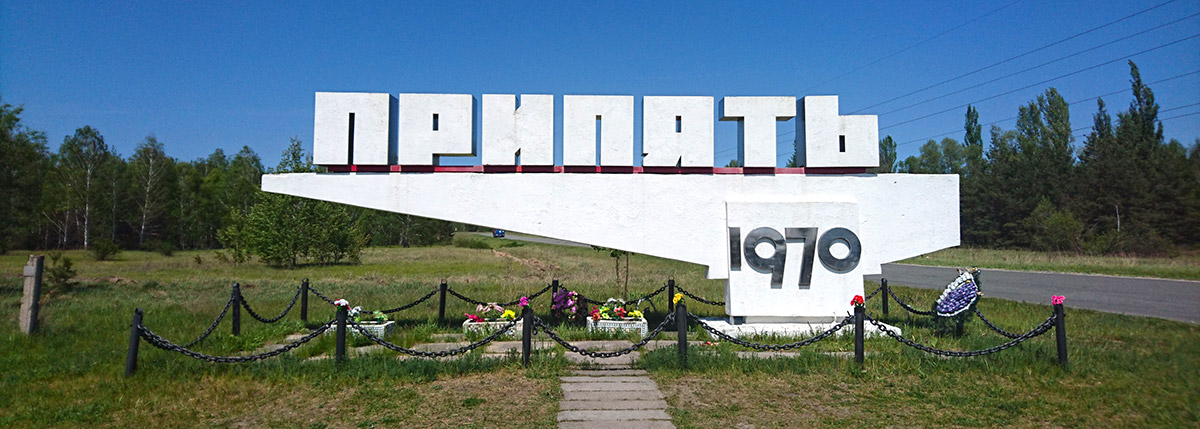

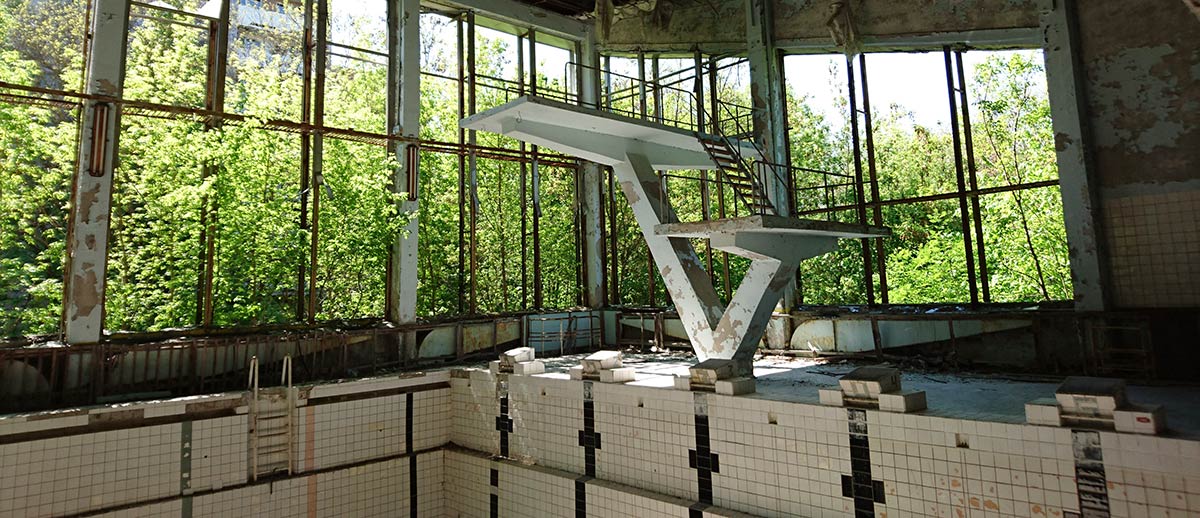
Overall, the tour of the Chernobyl Nuclear Exclusion Zone is probably one of the most amazing travel experiences I’ve had. It was surreal, powerful and sobering—a window into the immediate human cost of the Chernobyl tragedy. As someone fascinated with abandoned places, it lived up to all the expectations I had and then some. Once things return to normal in Ukraine, I would highly recommend seeing what it’s like for yourself. Pair it with a trip to Kyiv, a city with a lot of surprises and wonderful people.

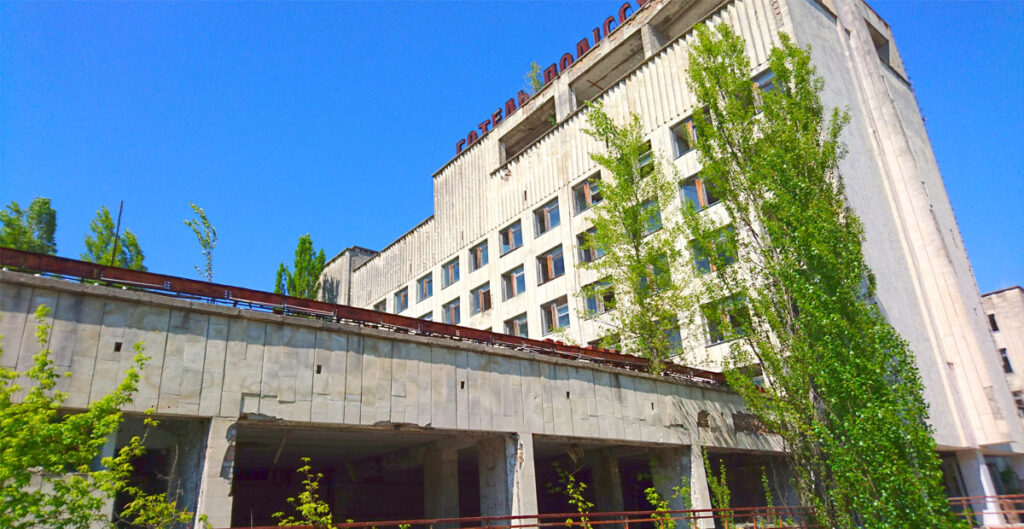
Pingback: Duga-1 Radar - An Abandoned Military Facility in the Chernobyl Nuclear Exclusion Zone 🇺🇦